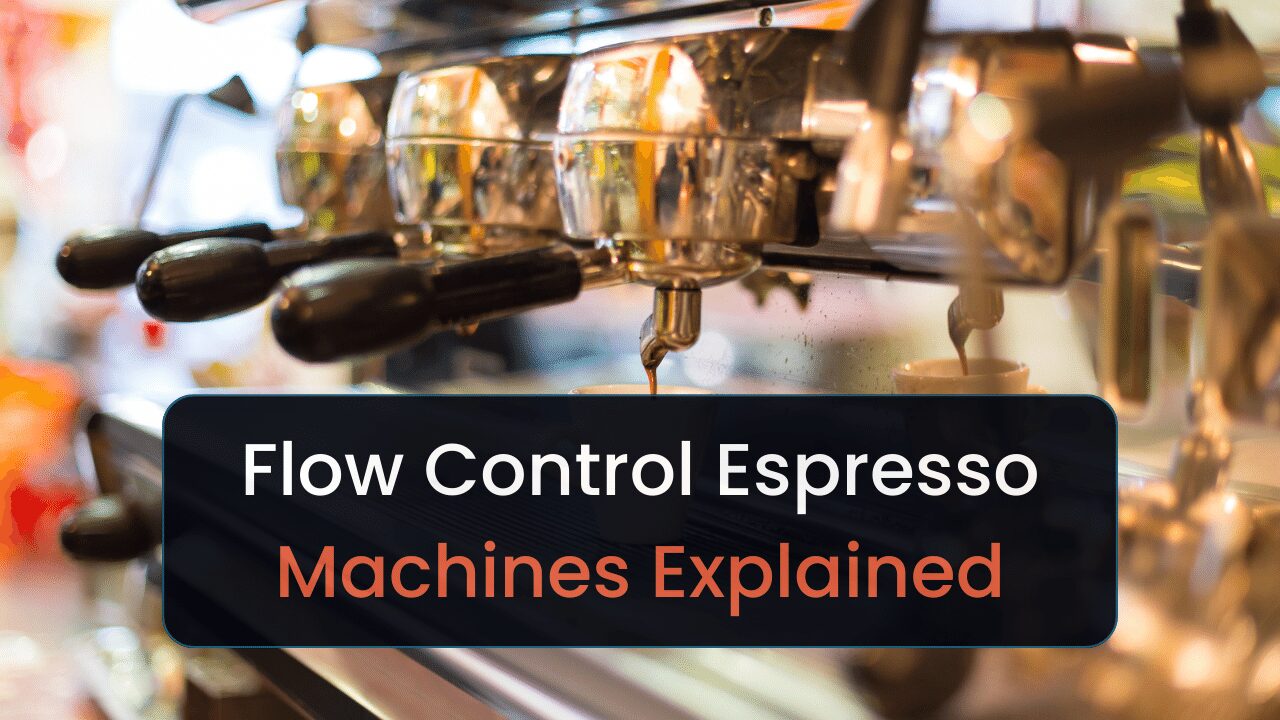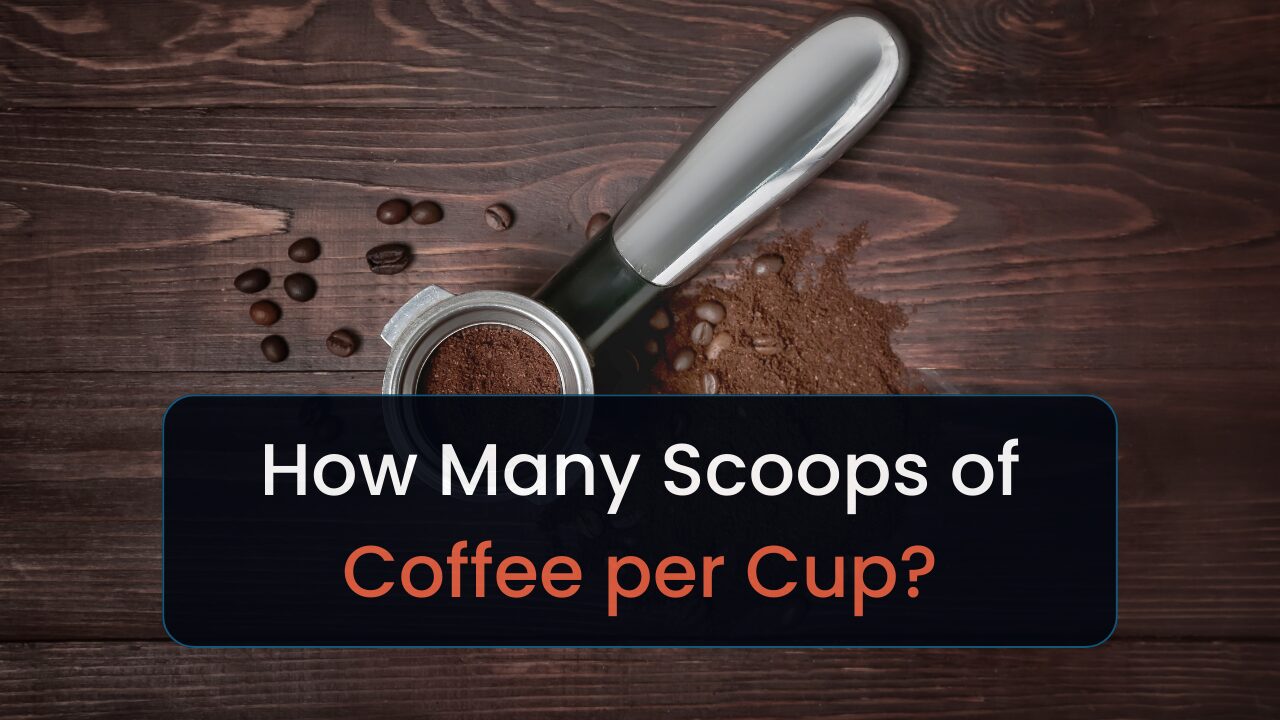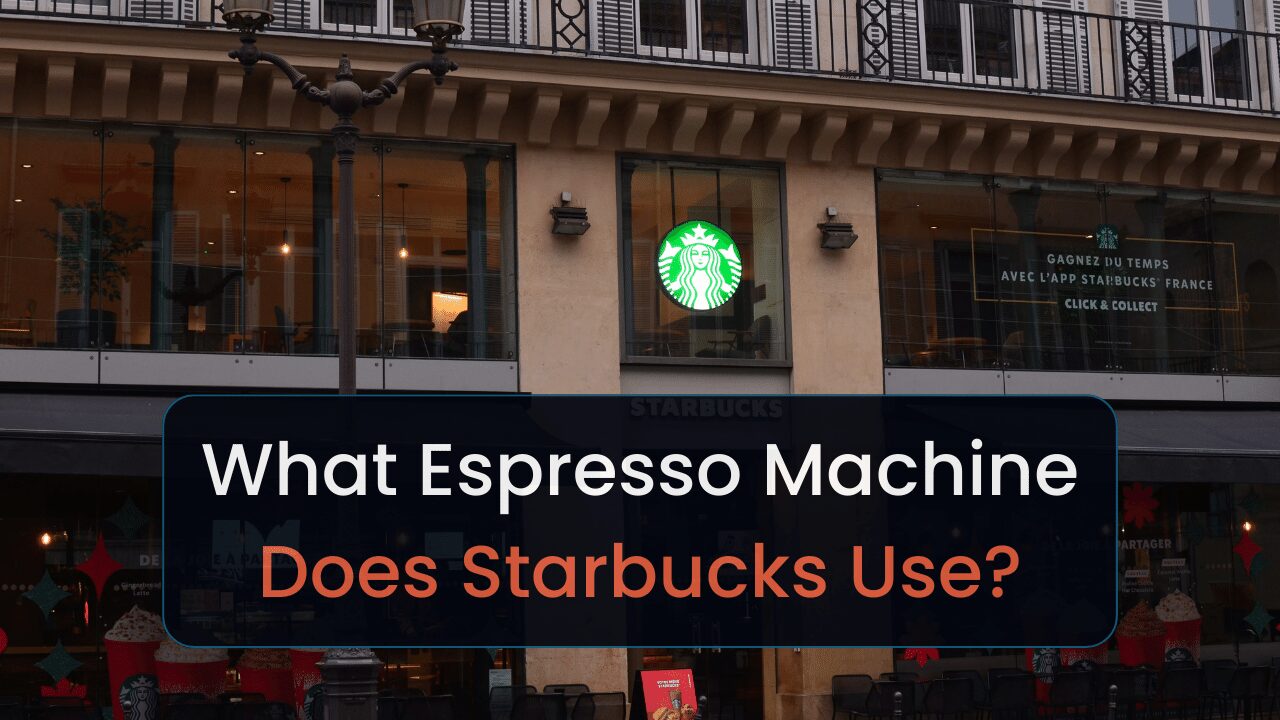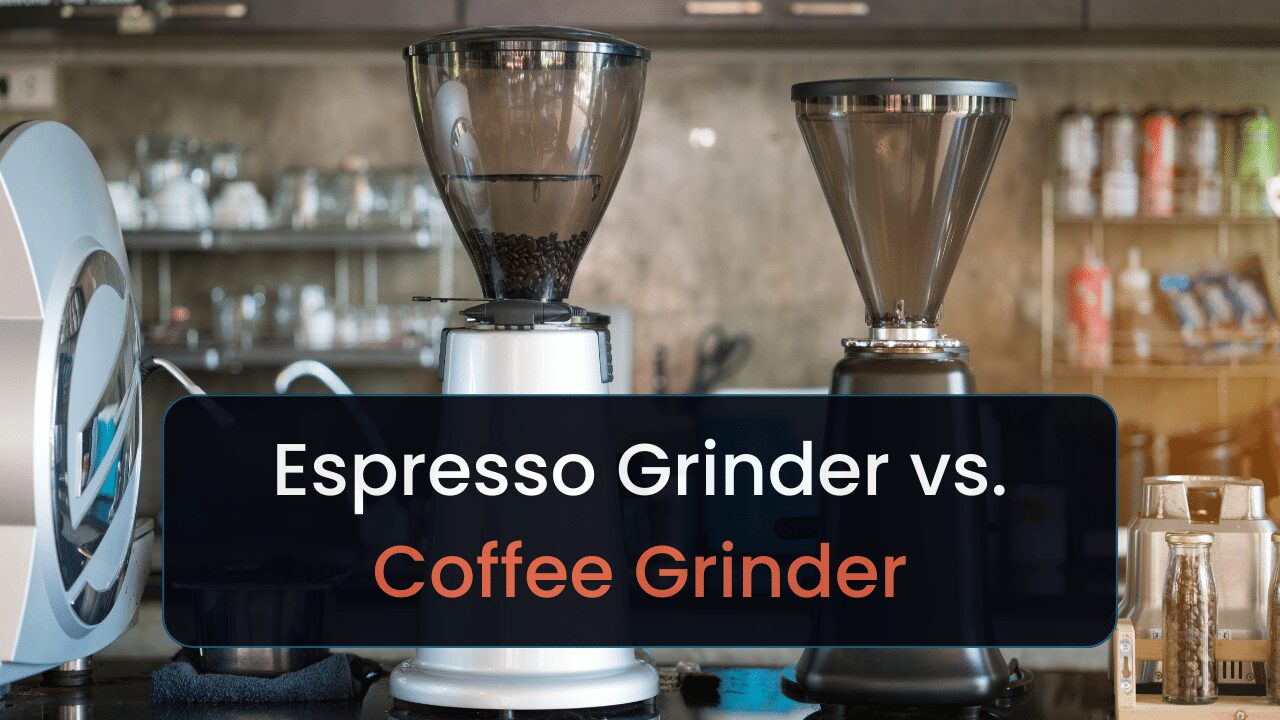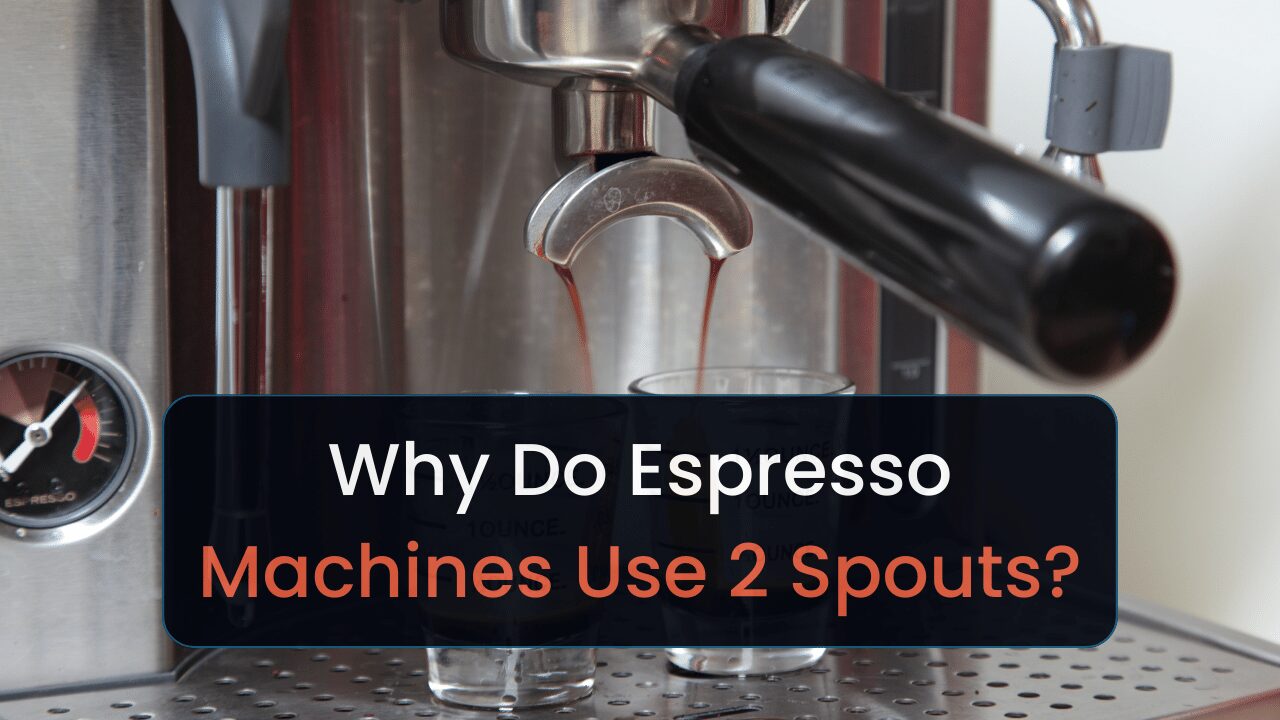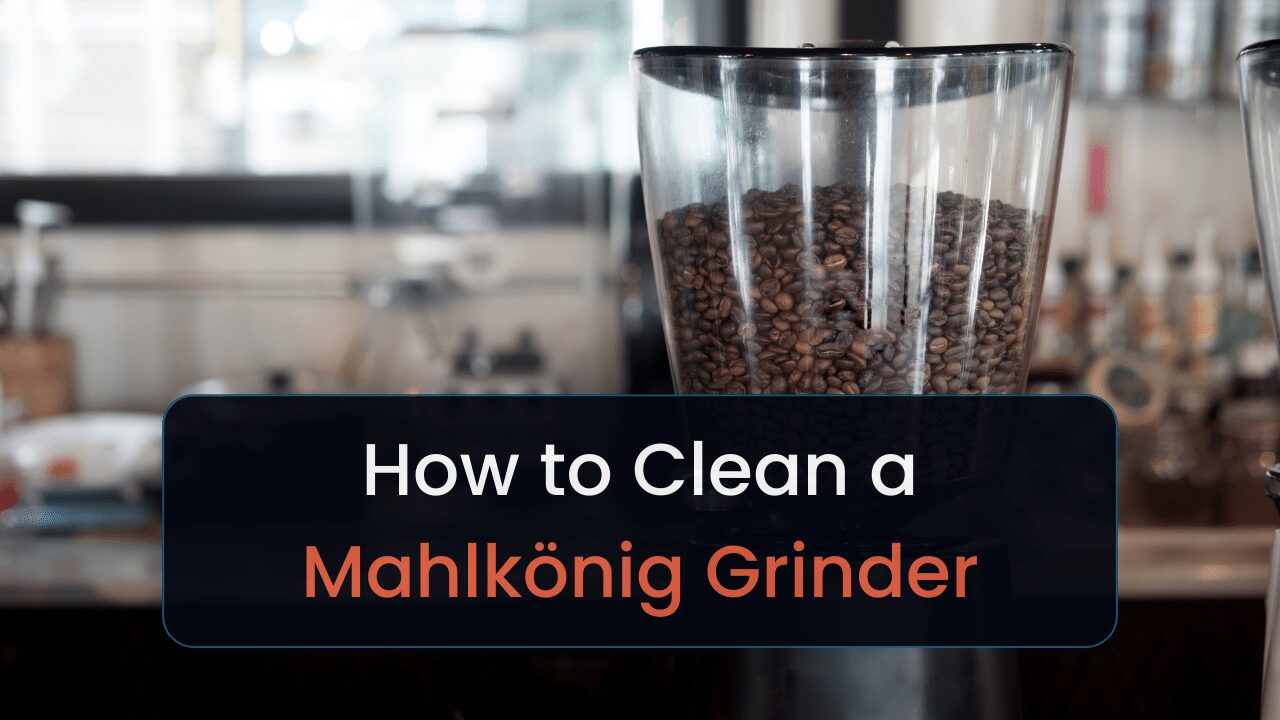This guide will cover the differences of grinders from the brands CEADO and Eureka. Read on to learn more.
I’m always searching for an ideal coffee grinder for home and business use. That led me to compare devices offered by a couple of popular brands, CEADO and Eureka. This guide will have my findings.
I’ll compare pairs of popular grinders for home and business use. I may throw in some prosumer models. By the time you’re finished reading, you’ll know which brand offers better grinders for your needs and situation.
Here is an overview:
Contents
Let’s begin.
Key Takeaways
- Eureka has (on average) cheaper grinders.
- CEADO provides more affordable home models.
- Eureka commercial models work better for small coffee shops.
- Eureka models cater more toward prosumer use.
Home CEADO vs. Eureka Grinders
The following sections will compare these Eureka and CEADO coffee grinders:
- CEADO E5P: Most affordable
- Eureka Specialita: Great for multiple brew methods
- CEADO E6P: A prosumer(ish) device for multiple brewing methods
- Eureka Oro Mignon XL: Grinds the quickest
I’ll first display all these machine’s specs. From there, I’ll break down both machines and compare them based on those specs. Afterward, I’ll explain whether each model in the pairs I compare is better; and who they’re better for.
CEADO grinders for home use are typically cheaper than Eurekas. However, Eureka has more affordable commercial models.
Without further ado…
Currently, we do not offer Eureka grinders in our inventory, and therefore, no links for these products are provided. However, we remain committed to unbiased and fair representation of all products.
1. CEADO E5P vs. Eureka Mignon Specialita
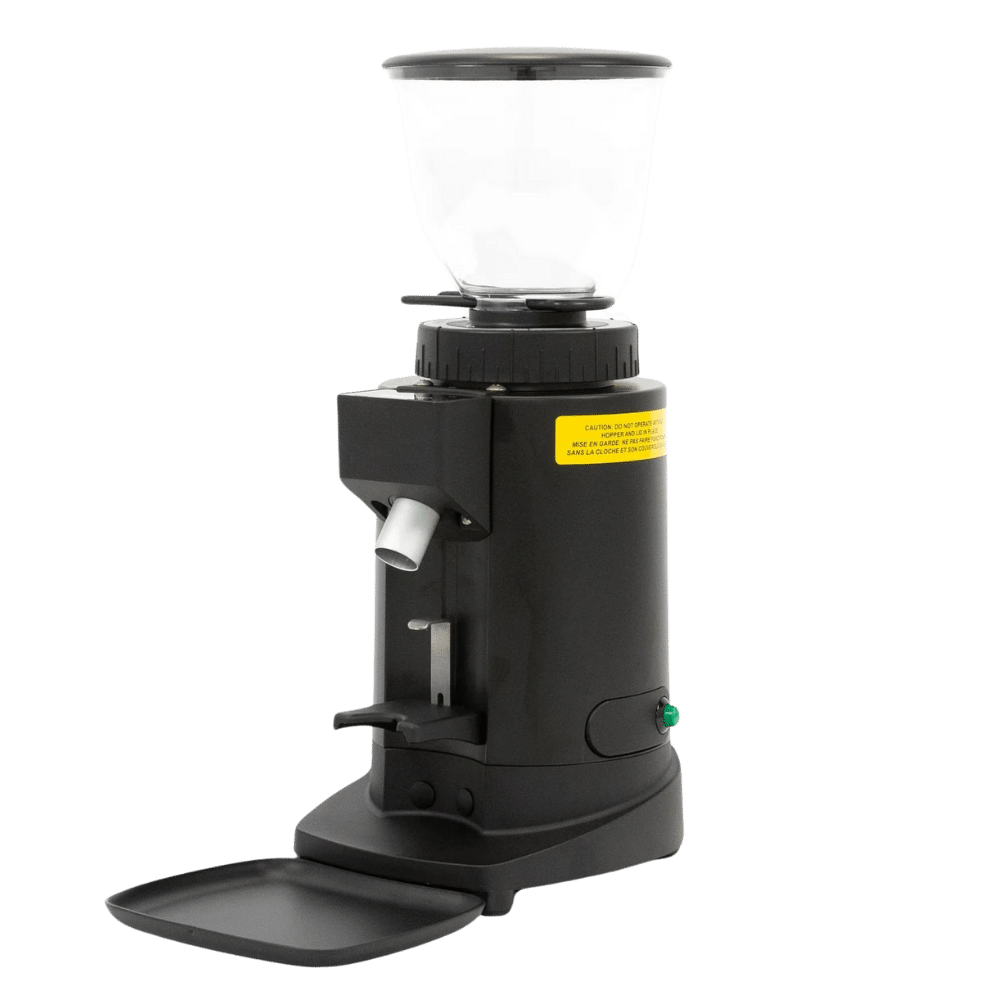
CEADO E5P

Mignon Specialita
| E5P | Mignon Specialita | |
| Price | $549 | $699 |
| Burr Shape | Flat | Flat |
| Material (Burr) | Steel | Hardened steel |
| Diameter (Burr) | 64 mm | 55 mm |
| Hopper Capacity | 1.3 lbs | 10.58 oz |
| Watts | 300 W | 260 W |
| RPM for Burrs | 1650 RPM | 1350 RPM |
| Net Weight | 19 lbs | 12.32 lbs |
| Dimensions (D × W × H) | 8.34 × 7 × 17.32 in | 5.5 × 4.75 × 13.87 in |
The CEADO E5P works best for home baristas who primarily grind espresso. The Eureka Specialita works better for anyone wanting to use various brewing methods.
The difference in what brewing methods these machines support lies in the revolutions per minute (RPM). The higher the RPM, the finer the grinds. The lower, the coarser. And the Specialita uses fewer RPMs than its competitor.
The slower motor makes it better for coffee brewing methods like French press, drip coffee, and cold brew.
The E5P will also grind a bit quicker due to having larger burrs. Because the larger your burrs, the less heat generation, the faster the grind, and the less grind retention you’ll deal with.
And the E5P has a high capacity overload, which will prevent accidental blocks caused by too many beans.
If you’re not a hardcore coffee enthusiast and care a lot about aesthetics, you may want to choose the Mignon Specialita. It looks much better (design-wise) and comes in more than 10 colors.
That’s subjective, I suppose.
Which Is Better?
The CEADO E5P is more affordable and does a much better job with grinding espresso due to using more RPMs. The Mignon Specialita works better for coarse brewing methods, since it’s slower.
2. CEADO E6P vs. Eureka Oro Mignon XL
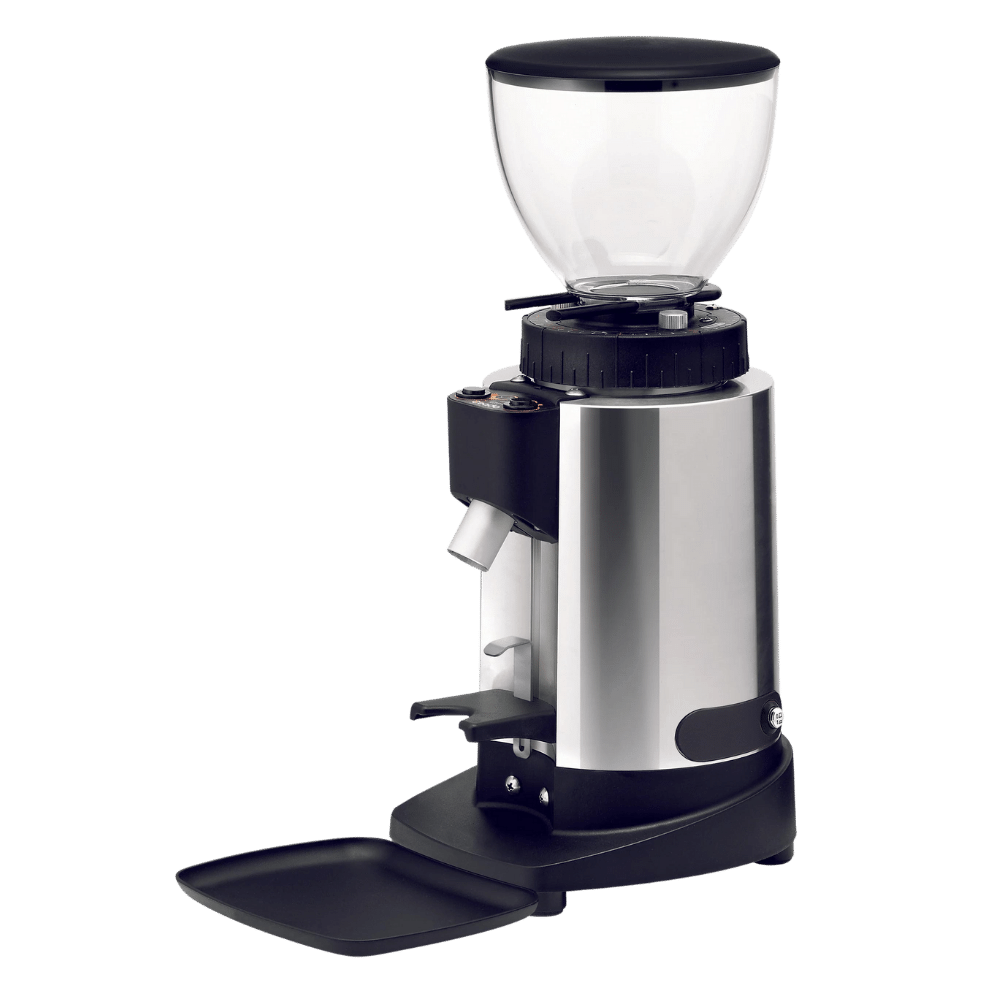
CEADO E6P

Oro Mignon XL
| E6P | Oro Mignon XL | |
| Price | $920 | $899 |
| Burr Shape | Flat | Flat |
| Material (Burr) | Steel | Steel |
| Diameter (Burr) | 64 mm | 65 mm |
| Hopper Capacity | 1.3 lbs | 10.6 oz |
| Watts | 300 W | 320 W |
| RPM for Burrs | 1380 (50 Hz)1650 (60 Hz) | 1650 RPM |
| Net Weight | 19 lbs | 15.9 lbs |
| Dimensions (D × W × H) | 7 × 9 × 18 in | 7.1 × 4.7 × 15 in |
The CEADO E6P works better when grinding for multiple brew methods at home or in a small coffee shop. The Oro Mignon XL is a bit better in both scenarios due to grinding a little faster.
The Oro Mignon XL boasts 65 mm burrs, which will grind a little faster than the 64 mm burrs the E6P is packing. Eureka’s grinder will spit out 2.3–2.8 grams per second [1]. CEADO’s device will do 1.7–2.0 grams per second.
Why do bigger burrs result in quicker grinds? Bigger burrs have a larger surface area in contact with the beans, allowing them to grind more beans simultaneously.
Since both devices are suitable for small coffee houses, I’d consider these prosumer(ish) models. I couldn’t find how long the burrs on the E6P and the Oro Mignon XL will last. But the CEADO E5P burrs will grind up to 880 pounds before requiring a placement [2].
And since the E6P is an upgrade, it SHOULD grind more. Regardless, it’ll likely take you almost a decade to wear down those burrs as a home user.
The E6P also works better for multiple brewing methods since it uses 1380 RPM at 50 hertz. Having less revolutions results in coarser grinds, which are ideal for brewing methods like drip or cold brew.
If you decide to use either model for a small coffee shop, I’d use the E6P over the Oro Mignon XL due to the larger hopper size. The larger the hopper, the less you’ll need to refill it. Which’ll improve productivity.
Which Is Better?
The Oro Mignon XL is more affordable and grinds quicker than the E6P, making it better for home use—when grinding espresso. Folks wanting to use other brewing methods will want the E6P.
Business CEADO vs. Eureka Grinders
Coffee shop owners (aspiring and current) will see comparisons of the following grinders throughout the following sections:
- CEADO E37S: Best for high-traffic coffee houses
- Eureka Atom Speciality 75: Better as a prosumer home machine
- CEADO E37J: Best for coffee carts
- Eureka Zenith: Best for small coffee shops
- CEADO E7: Best grinder with a doser
- Eureka Drogheria MCD4 85: Most affordable for high-traffic cafés
- CEADO E37Z: Best for grinding espresso beans
- Eureka Helios 65: Best for multiple brewing methods
You’ll first see a comparison of specs between various pairs of popular machines both brands offer. Then I’ll compare those specs and explain who each grinder is better for and in what scenario.
Here we go.
1. CEADO E37S vs. Eureka Atom Speciality 75
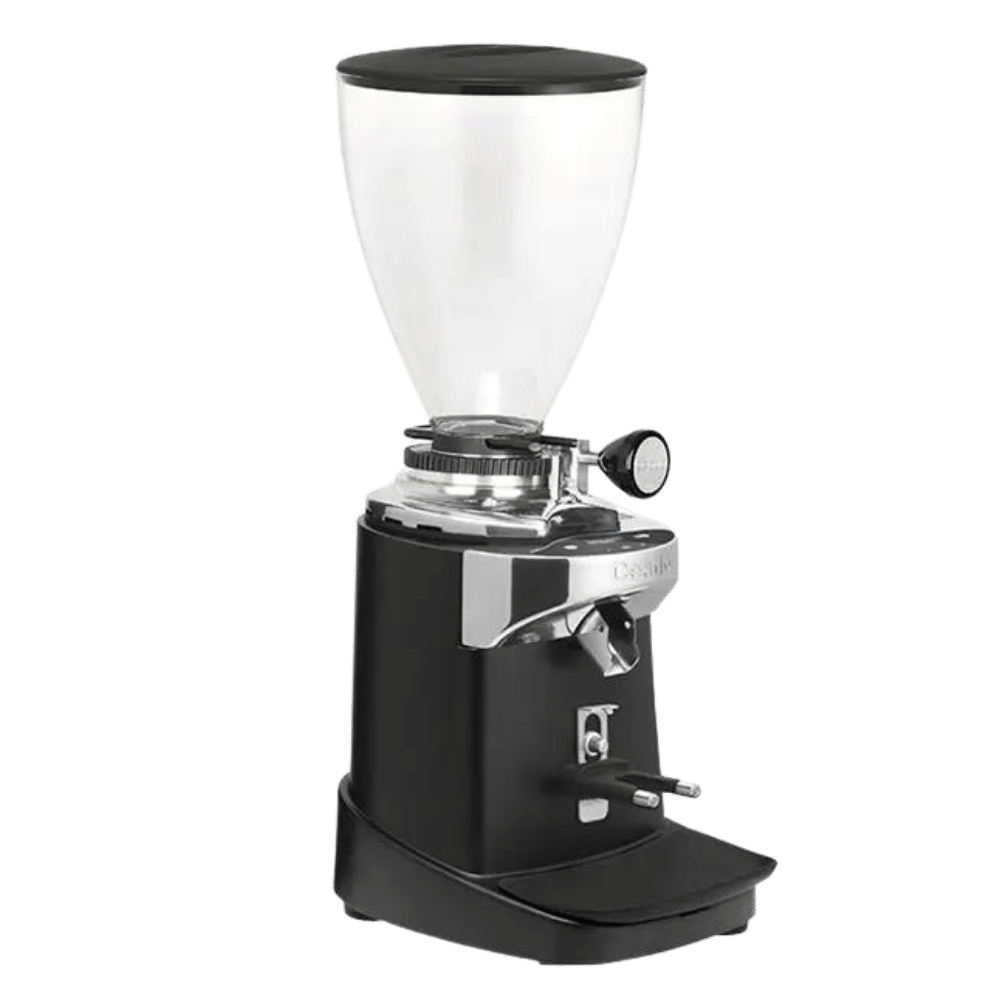
CEADO E37S
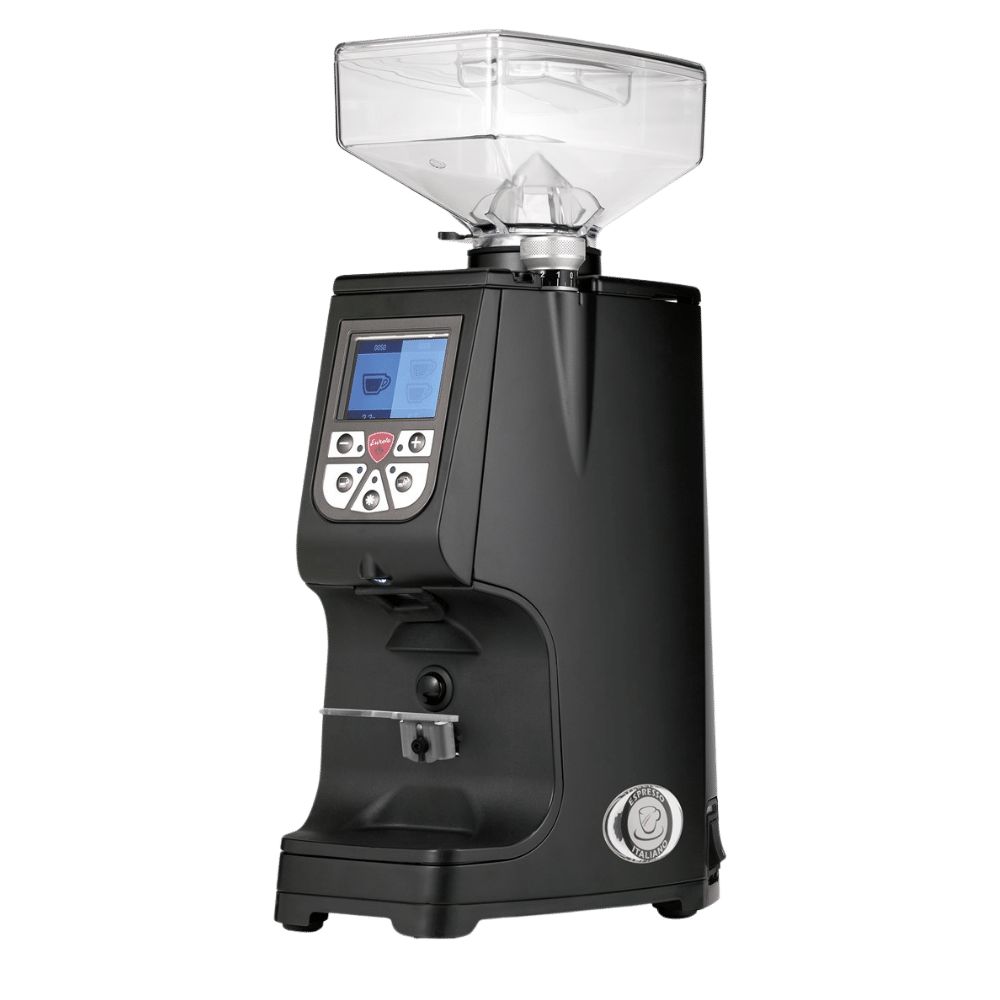
Atom Speciality 75
| E37S | Atom Speciality 75 | |
| Price | $1,785 | $1,499 |
| Burr Shape | Flat | Flat |
| Material (Burr) | Steel | Hardened steel |
| Diameter (Burr) | 83 mm | 75 mm |
| Hopper Capacity | 3.5 lbs | 10.5 oz |
| Watts | 500 W | 900 W |
| RPM for Burrs | 1480 RPM (50 Hz)1700 RPM (60 Hz) | 1400 RPM |
| Net Weight | 26 lbs | 21 lbs |
| Dimensions (D × W × H) | 9 × 12 × 22 in | 8.94 × 7.08 × 17.2 in |
The CEADO E37S is a great addition to busy coffee houses that use multiple brewing methods. The Atom Specialty 75 works better for super slow cafés or for home use.
Why’d I compare these devices if the Atom Specialty 75 works better for home use? Because that’s what the people wanted. And the Atom Specialty 75 COULD work in a business if it had a larger hopper.
The tiny hopper on the Eureka model would require you to refill it constantly, which could ruin time management during a rush. Unless you don’t mind keeping customers waiting.
Because it has 75 mm burrs. It’ll grind faster than many of the commercial-grade models I’ll list in this section. And it’ll generate less heat. However, the E37S has bigger burrs, which means it’ll do both better than the Atom Specialty 75.
It also has much higher RPMs, making it better for brewing espresso. Because you want more revolutions per minute when grinding for espresso or Turkish coffee. The E37S also uses 1480 RPMs at 50 hertz, making it great for coarse grinds.
Coarse grinds require a slower motor. Since the grind will come out uneven.
Why use the Atom Specialty 75 for home use when there are many more affordable options that’ll also get the job done? If you have a partner that’s constantly angry at you grinding coffee in the early hours, they’ll appreciate the lack of sound this device produces.
It has great sound insulation due to its design, which means you may not wake everyone up in your home as often. That’s also a perk for small coffee shops, where guests don’t have to scream over the sound of roaring grinders to have a conversation.
Which Is Better?
The CEADO E37S works better for business use because of its larger burrs and hopper. The Atom Specialty 75 could work for small cafés and shops, but is better as a prosumer home device.
2. CEADO E37J vs. Eureka Zenith
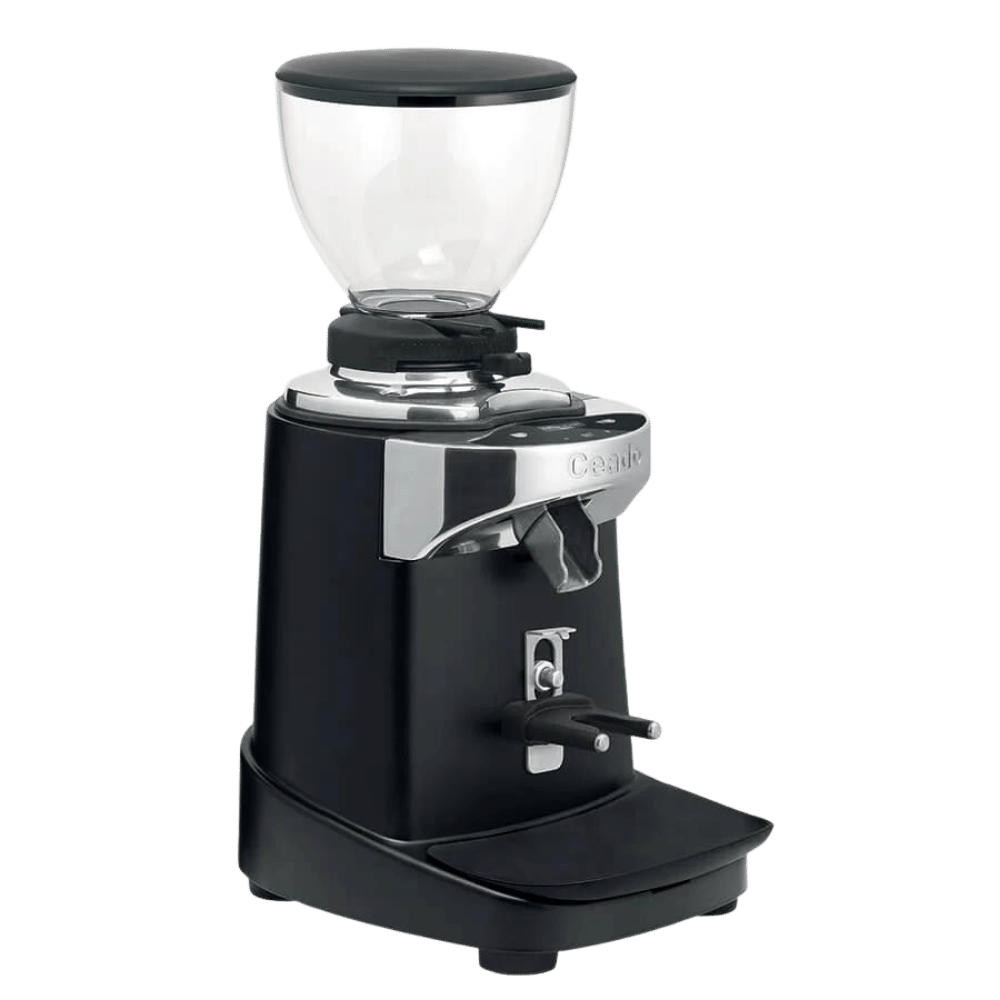
CEADO E37J
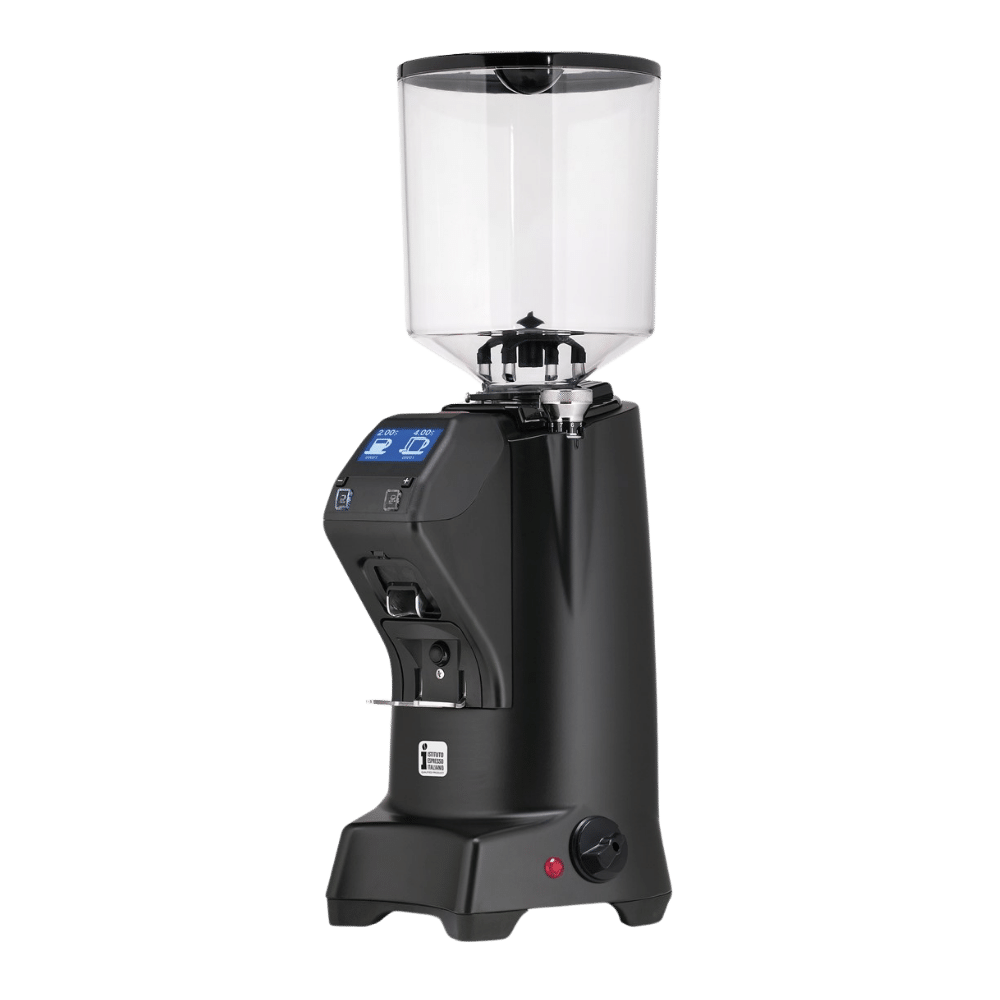
Eureka Zenith
| E37J | Zenith | |
| Price | $1,099 | $1,060 |
| Burr Shape | Flat | Flat |
| Material (Burr) | Steel | Steel |
| Diameter (Burr) | 64 mm | 75 mm |
| Hopper Capacity | 1.32 lbs | 3 lbs |
| Watts | 300 W | 350 W |
| RPM for Burrs | 1650 RPM | 1400 RPM |
| Net Weight | 20.9 lbs | 26.4 lbs |
| Dimensions (D × W × H) | 12.2 × 8.3 × 17 in | 10 × 9 × 25 in |
The CEADO E37J works best for small coffee shops and carts that want to focus on making espresso drinks. The Zenith works better for larger shops that want to use multiple brewing methods.
CEADO’s grinder weighs less than the Zenith, making it ideal for loading and unloading when setting up a coffee cart. However, the smaller burrs limit the amount of foot traffic it can support.
Larger burrs are better for serving more people because they grind faster, generate less heat, and have less grind retention. Let’s break down why the larger burrs on the Zenith are better:
- The 75 mm burrs grind up to 3.8 grams per second; the 64 mm burrs grind up to 2 grams per second.
- Less heat generation results in a longer machine lifespan and less impact on bean taste.
- Because constantly generating heat could burn your beans and cause wear on your grinder.
- The larger surface area results in beans having more space to move around and escape the grinding chamber, reducing the chance of getting stuck.
The Zenith is also better for multiple brewing methods since it uses fewer revolutions per minute. Resulting in more coarse grinds. However, the CEADO will work better for espresso since it uses more RPMs.
Eureka’s grinder also has more than double the hopper size as the E37J. Improving productivity since your team won’t need to refill the hopper as often.
Which Is Better?
The Eureka Zenith works better for high-traffic coffee shops due to having larger burrs. The E37J works better for smaller shops and carts due to its lightweight design.
3. CEADO E7 vs. Eureka Drogheria MCD4 85
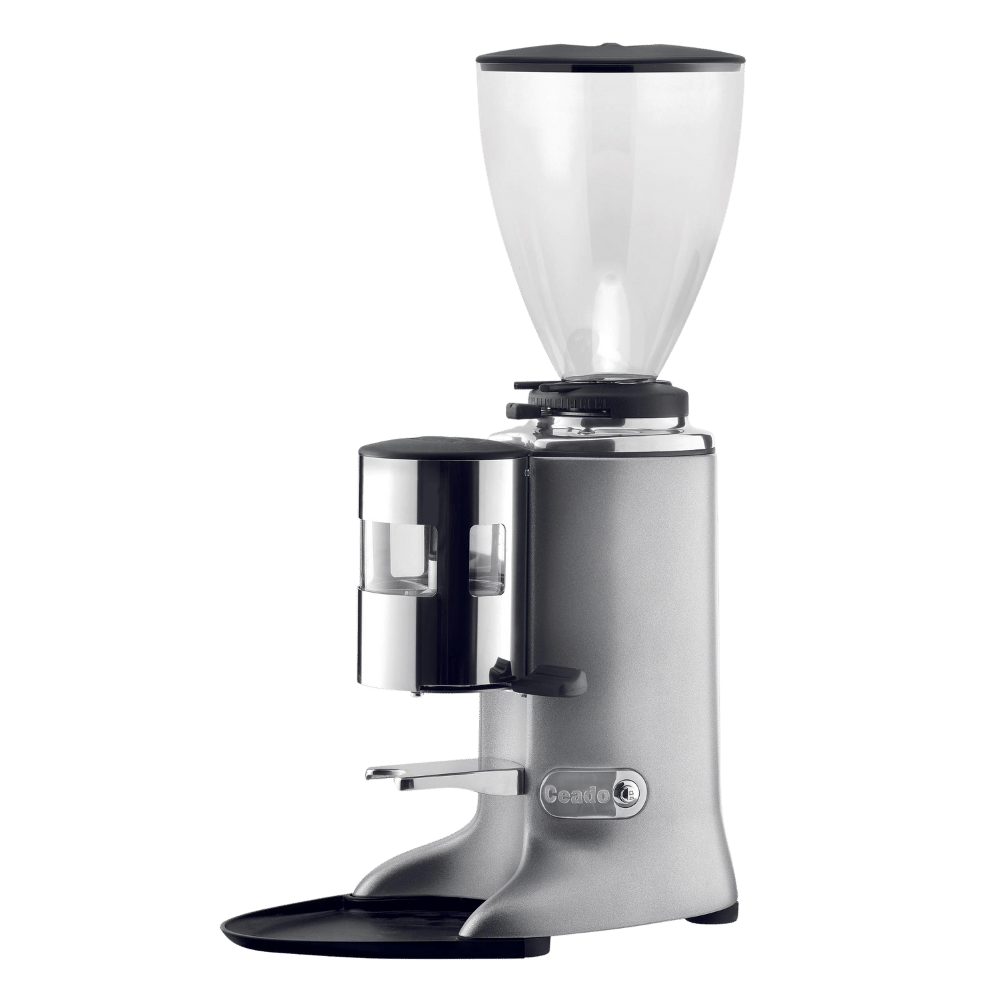
CEADO E7

Eureka Drogheria MCD4 85
| E7 | Drogheria MCD4 85 | |
| Price | $1,022 | $949 |
| Burr Shape | Flat | Flat |
| Material (Burr) | Steel | Steel |
| Diameter (Burr) | 64 mm | 85 mm |
| Hopper Capacity | 3.5 lbs | 2.2 lbs |
| Watts | 400 W | 670 W |
| RPM for Burrs | 1400 RPM | 1430 RPM |
| Net Weight | 29 lbs | 35 lbs |
| Dimensions (D × W × H) | 9 × 12 × 25 in | 10.5 × 7 × 25.5 in |
The Eureka Drogheria MCD4 85 is better for coffee shops with any amount of traffic. Whereas, the E7 is good for coffee carts due to weighing less.
Why does the E7 cost more despite having much smaller burrs?
Brand name? Possibly. More than likely, it’s because of the attached doser. A doser dispenses pre-measured grounds with lightning speed, keeping barista workflow consistent and queues short during coffee shop rushes.
That pales in comparison versus the 13.5 grams per second the Drogheria MCD4 can spit out when grinding for drip coffee. Or the 10.5 grams per second when grinding fine grounds.
The larger burrs on Eureka’s grinder allow it to grind much quicker due to having a larger surface area. This also results in the machine generating less heat and having less ground retention. Extending your machine’s lifespan and reducing the frequency at which you’ll clean.
However…
The Drogheria MCD4 does heat up a lot when trying to grind for Turkish coffee if you grind more than 8 ounces at a time. It’s something to keep in mind.
There’s no competition here, otherwise. I compared these machines because they have similar price points and revolutions per minute.
Which Is Better?
Considering the Drogheria MCD4 85 price, it’s better for any coffee shop due to having larger burrs.
4. CEADO E37Z vs. Eureka Helios 65
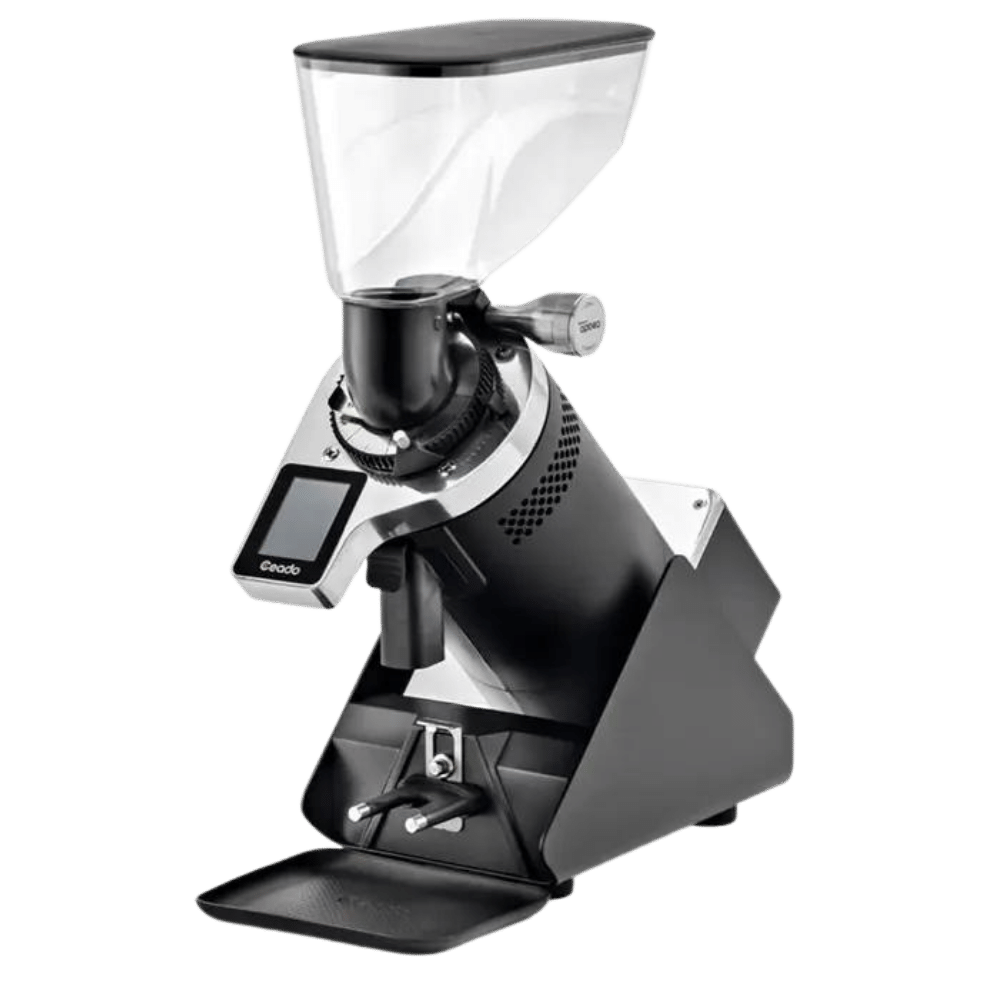
CEADO E37Z
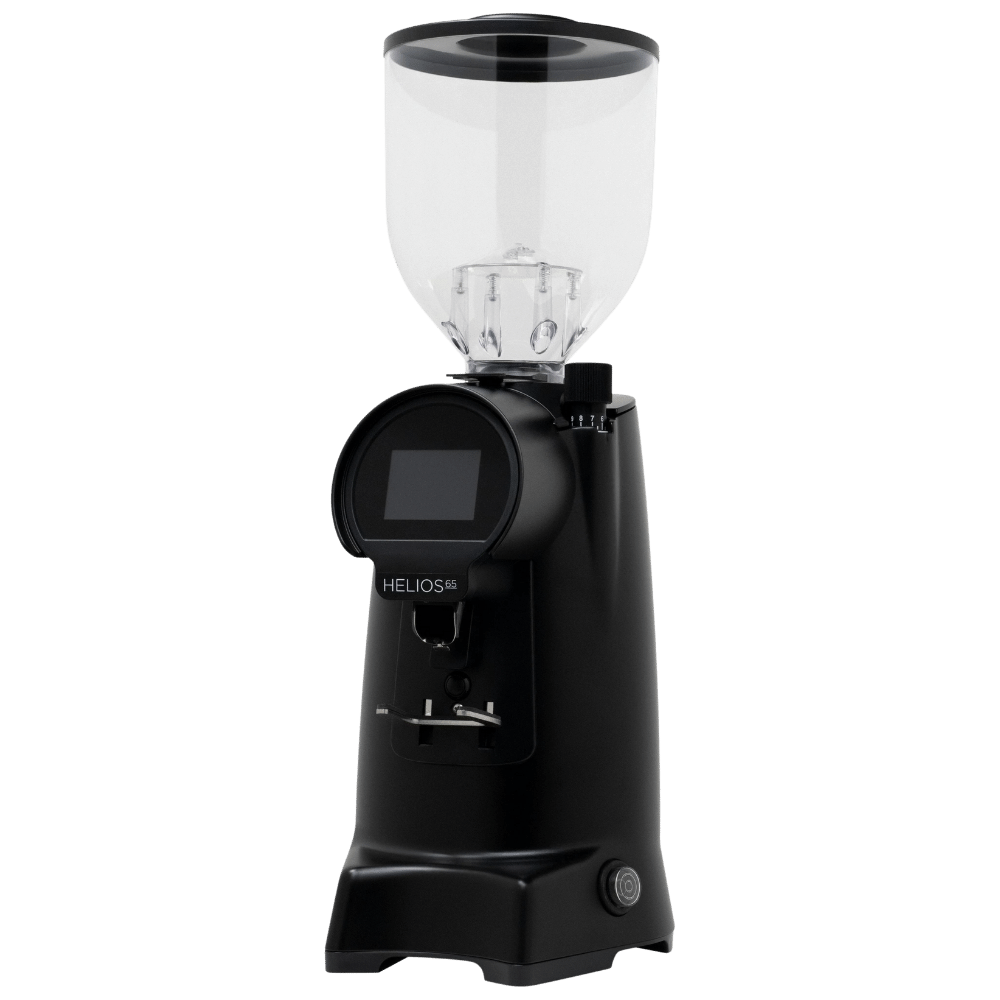
Helios 65
| E37Z | Helios 65 | |
| Price | $3,850 | $1,199 |
| Burr Shape | Flat | Flat |
| Material (Burr) | Steel | Steel |
| Diameter (Burr) | 83 mm | 65 mm |
| Hopper Capacity | 2.6 lbs | 2.5 lbs |
| Watts | 900 W | 570 W |
| RPM for Burrs | 1700 RPM (60 Hz) | 1380 RPM |
| Net Weight | 41.5 lbs | 26.5 lbs |
| Dimensions (D × W × H) | 7.9 × 16.5 × 21.7 in | 9.84 × 8.66 × 23.6 in |
The CEADO E37Z works best for high-traffic shops grinding for espresso drinks. The Helios 65 works better for smaller shops.
Why’d I compare them, then?
People asked for this comparison. Thus, I provided it. The Helios 65 is also one of Eureka’s most expensive devices. Though, there’s a significant price difference versus one of CEADO’s priciest machines.
The E37Z has much larger burrs, which means it’ll grind quicker (5 grams per second). It’ll also generate less heat, which’ll extend your machine’s lifespan since it faces less stress.
The higher revolutions per minute on this device also make it ideal when grinding for Turkish coffee or espresso. Since quicker motors result in more finer grinds.
Which Is Better?
The CEADO E37Z, while pricier, works much better for larger businesses due to having larger burrs and higher RPMs. The Helios 65 works better for smaller shops due to its price and burr size.
That’s all for the comparisons. Let’s dive into each brand’s upbringing.
Each Company’s History
The following sections will cover each company’s history of operation. This may help you determine whether their values and experience reflect what you’re looking for with a coffee grinder.
Keep reading.
1. CEADO History
In 1952, Egidio Girardi, a budding coffee grinder craftsman, brought CEADO to life. However, the mantle eventually passed to Michele, Egidio’s eldest son.
Despite delving into the online annals, the company’s later chapters and crowning achievements remain shrouded in mystery.
Let’s check out what Eureka’s history was like.
2. Eureka History
In 1920 Florence, Italy, Aurelio Conti, a young innovator, brought Eureka to life, its gears turning towards the meticulous craft of espresso grinders. And I couldn’t find additional information on the company’s history from here.
You may not like either brand mentioned. Here are other grinder brands to consider.
Other Brands to Consider
Eureka and CEADO are heavyweights, but they’re not the only contenders in the coffee grinder ring. Dive into our other comparisons to uncover hidden gems:
You’ll find more brands to consider when shopping for a grinder.
Hopefully all the information I had helps you on your quest for the perfect grinder.
Conclusion
Eureka provides more affordable commercial models—for the most part. However, CEADO’s higher-end models work much better in some scenarios.
We have a bunch of other CEADO coffee grinders to compare if you aren’t satisfied with what we talked about.

